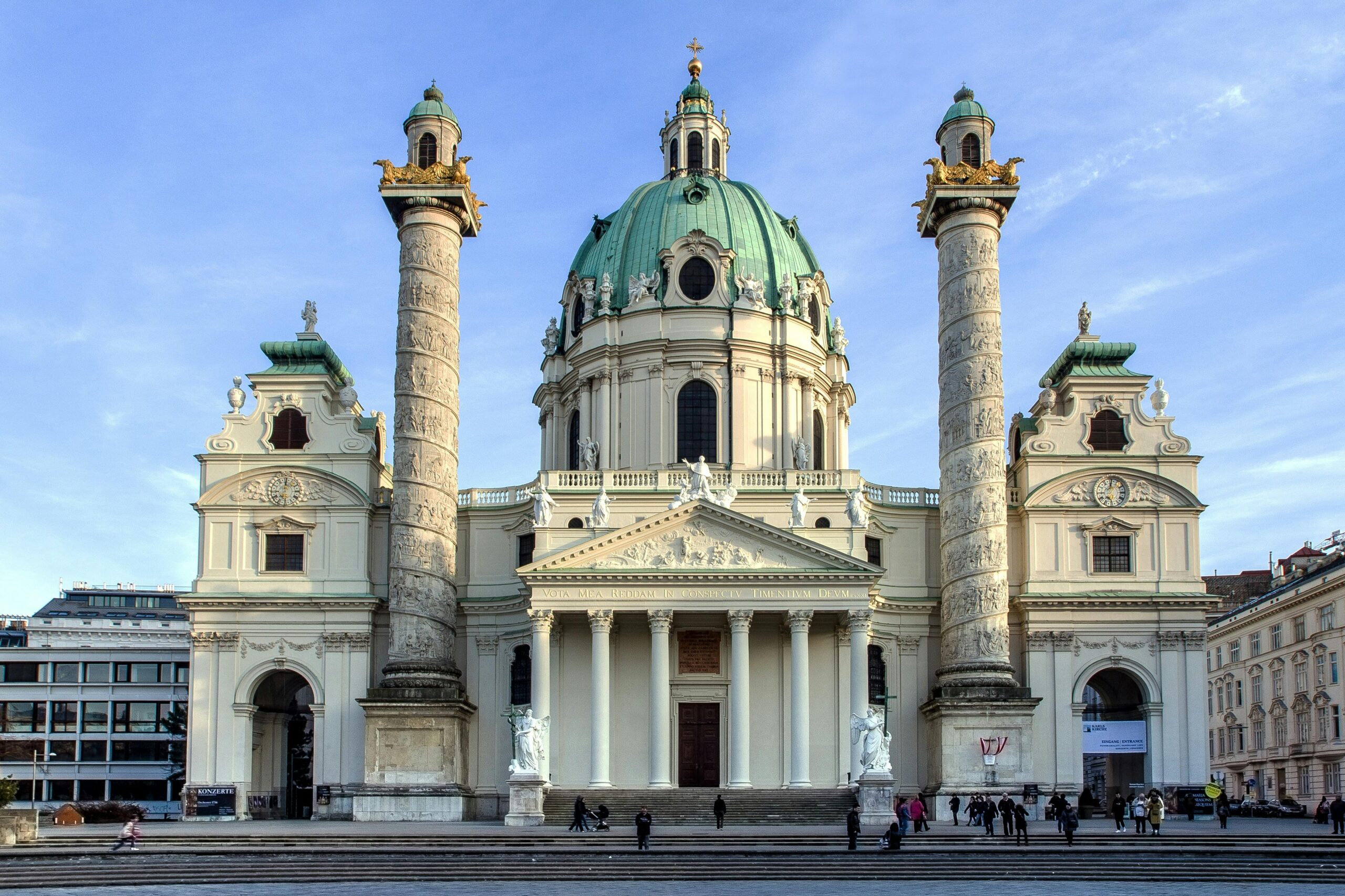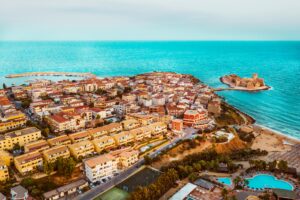In the heart of Europe lies a country steeped in history, culture, and natural beauty – Austria. From the majestic peaks of the Alps to the baroque splendor of its cities, Austria offers visitors a diverse and captivating experience like no other. Whether you’re drawn to the architectural wonders of Vienna, the alpine charm of Innsbruck, or the idyllic lakes of the Salzkammergut region, there’s something for everyone in this enchanting land.
Join us on a virtual journey as we uncover the treasures of Austria, from its iconic landmarks to its hidden gems. Discover the rich tapestry of its past through visits to magnificent palaces, medieval castles, and charming villages frozen in time. Indulge in the culinary delights of Austrian cuisine, from hearty schnitzels to delicate pastries, and savor the flavors of a culture shaped by centuries of tradition.
But Austria is more than just a destination – it’s an experience that will stay with you long after you’ve returned home. Whether you’re skiing down pristine slopes in the winter, hiking through lush meadows in the summer, or simply sipping coffee in a cozy café, you’ll find that Austria has a way of captivating your heart and soul.
So come along as we embark on an unforgettable journey through the enchanting landscapes and timeless wonders of Austria. Whether you’re a first-time visitor or a seasoned traveler, there’s always something new to discover in this land of alpine magic and imperial grandeur. Welcome to Austria – where every moment is a masterpiece waiting to be experienced.
Exploring Vienna, the Austrian capital in Europe, unveils new horizons in terms of culture and history. Amidst imperial palaces, hundreds of museums, and a UNESCO-listed historic center, the former capital of the Austro-Hungarian Empire has retained all its grandeur. You may be wondering what to do in Vienna? In this comprehensive article, I unveil all the must-see places for an unforgettable journey in the heart of the capital!

What to Do in Vienna?
The answer depends on the duration of your trip. Whether you’re staying in Vienna for a weekend, a few days, or even a week, there’s always something to fill your days! Let’s embark on this journey together!
Schönbrunn Palace
Schönbrunn Palace is a must-see attraction during your visit to Vienna. Classified as a UNESCO World Heritage Site and often compared to the Palace of Versailles, it served as the summer residence of the Austrian imperial family, the Habsburgs. Inside this sublime 18th-century Baroque edifice, you can tour the imperial apartments and the numerous ceremonial rooms. The grand gallery adorned with large mirrors, immense windows, and magnificent frescoes is particularly impressive. Each room is richly decorated with meticulous attention to detail, showcasing the finest materials of the time. At Schönbrunn Palace, don’t forget to set aside enough time to explore the vast surrounding park. Here, you’ll find attractions such as the Palm House, the zoo, the Imperial Carriage Museum, and numerous fountains. The history of this place is absolutely fascinating, so plan for at least half a day to truly immerse yourself in its charm.
Another activity that can turn into a memorable experience during your visit to Schönbrunn Palace is attending a classical music concert in the famous Orangery Hall. This exceptional venue, once used for grand court banquets, offers you the chance to hear Mozart’s most famous operas. Indeed, it was in this palace that the musician performed his first concert at the age of 6. Be sure to book your tickets in advance.
Belvedere Palace
Nestled amidst the enchanting cityscape of Vienna lies the majestic Belvedere Palace, an architectural masterpiece that beckons visitors from around the globe to marvel at its beauty and immerse themselves in its rich history.
Constructed in the 18th century as a summer residence for Prince Eugene of Savoy, a renowned military commander and patron of the arts, the Belvedere Palace is a testament to the opulence and grandeur of the Baroque era. Comprising two magnificent palaces – the Upper and Lower Belvedere – connected by a sprawling French-style garden, this UNESCO World Heritage site is a true gem of Viennese architecture.
As you approach the Belvedere Palace, you are immediately captivated by its striking façade, adorned with intricate sculptures, elaborate fountains, and graceful cascades. Step inside, and you are transported back in time to the splendor of the Habsburg dynasty, as you wander through opulent chambers adorned with exquisite works of art and sumptuous furnishings.
The Upper Belvedere houses one of the most impressive collections of Austrian art, including masterpieces by Gustav Klimt, Egon Schiele, and Oskar Kokoschka. Here, you can admire Klimt’s iconic painting “The Kiss,” a symbol of love and romance that has captivated audiences for generations, as well as countless other treasures from Austria’s rich artistic heritage.
In the Lower Belvedere, you will find temporary exhibitions showcasing a diverse range of artistic styles and periods, ensuring that each visit offers something new and exciting to discover. Don’t miss the chance to explore the stately halls and lavish gardens, where you can soak in the beauty of your surroundings and imagine yourself transported to a bygone era of splendor and refinement.
But perhaps the true highlight of the Belvedere Palace is its magnificent gardens, which provide a tranquil oasis amidst the hustle and bustle of the city. Here, you can stroll along manicured pathways, admire colorful flowerbeds, and revel in the beauty of classical sculptures and ornate fountains, all while enjoying breathtaking views of Vienna’s skyline.
Whether you’re an art enthusiast, a history buff, or simply a lover of beauty and culture, a visit to the Belvedere Palace is sure to be a memorable experience. So come, wander through its hallowed halls, linger in its enchanting gardens, and discover the magic of this cultural jewel in the heart of Vienna.
Belvedere Palace is the third-largest Baroque palace in Vienna. It consists of two separate palaces connected by a large French-style garden. In the upper Belvedere, you can admire the largest collection of works by the Austrian painter Klimt, as well as paintings by Monet and Van Gogh. The Lower Belvedere hosts temporary exhibitions. To access the schedule of upcoming exhibitions, visit the Belvedere Palace website. In addition to these exhibitions, Belvedere Palace is a true architectural gem typical of the region, with an imposing facade, a marble-clad staircase, and elaborate decorations.
St. Charles’s Church
Nestled in the heart of Vienna, on the historic Karlsplatz, stands the magnificent St. Charles’s Church, a testament to the grandeur of Baroque architecture and a symbol of spiritual and cultural significance.
Constructed in the 18th century by Emperor Charles VI to commemorate the end of the devastating plague that ravaged the city, St. Charles’s Church is a striking example of the Baroque style, characterized by its elaborate ornamentation, dramatic contrasts of light and shadow, and exuberant use of decorative elements.
As you approach the church, you are immediately struck by its imposing façade, adorned with intricate sculptures and towering columns, a testament to the skill and craftsmanship of the artisans who brought this vision to life. Step inside, and you are greeted by a symphony of light and color, as sunlight streams through the stained glass windows, casting a kaleidoscope of hues upon the polished marble floors.
The interior of St. Charles’s Church is a marvel of artistic achievement, with every surface adorned with frescoes, sculptures, and gilded accents. The centerpiece of the church is its magnificent dome, which rises majestically above the nave, adorned with a stunning fresco depicting the glory of God surrounded by a host of angels and saints.
But perhaps the most awe-inspiring feature of St. Charles’s Church is its remarkable spiral staircase, which leads visitors on a journey to the heavens themselves. Ascend the staircase, and you are rewarded with panoramic views of Vienna, stretching out before you in all its splendor.
St. Charles’s Church is not merely a place of worship; it is a living testament to the power of faith and the enduring legacy of human creativity. Whether you come to admire its architectural beauty, to seek solace in its hallowed halls, or simply to marvel at the wonders of the Baroque era, a visit to St. Charles’s Church is an experience not to be missed.
During your trip to Vienna, it’s essential to make a detour to Karlsplatz, where St. Charles’s Church is located. Built in the 18th century by Emperor Charles VI to symbolize the end of the plague epidemic, the church is an imposing example of Vienna’s typical Baroque architecture. Even though the exterior of the church is impressive, wait until you pass through the door… you’ll be speechless! The paintings are sublime, and you’re even offered the opportunity to admire them up close thanks to a panoramic elevator. You can also take the time to explore the small stairs to reach the church’s rooftops and enjoy an exceptional panoramic view of Vienna.
Attend an Opera in Vienna
A visit to Vienna is incomplete without at least passing by the Vienna State Opera, where world-famous operas and concerts are performed. If you have time, the Vienna State Opera can be visited, but only at specific times and in guided format. To know the available slots during your visit to Vienna, check the National Opera’s website. The best option, in my opinion, is to attend an opera in this magnificent building. Contrary to popular belief, ticket prices are not that high and remain accessible, so take advantage of it! During the months of April, May, and June, the State Opera also organizes live operas: screenings of performances projected on a giant screen in front of the Opera. A great initiative to allow everyone to enjoy them for free!
Many other places in Vienna also offer the opportunity to attend concerts and operas that are equally renowned. Ticket prices are often lower than at the State Opera, but the performances lose none of their quality. Among them:
• The Four Seasons by Vivaldi and Mozart at the Musikverein • A concert by 30 musicians from the Mozart Orchestra in period costumes in the Musikverein’s Golden Hall • A performance of Vivaldi’s Four Seasons at St. Charles’s Church • A performance by the Vienna Residence Orchestra, one of the world’s best chamber orchestras • A concert of Mozart and Strauss at Schönbrunn Palace Regardless of the option you choose, you can find the entire schedule of performances in Vienna on the dedicated website. I recommend booking in advance, as Viennese people are fond of these types of performances, and venues can quickly fill up.
Hofburg Palace
In the heart of Vienna stands the magnificent Hofburg Palace, a testament to the grandeur and power of the Habsburg dynasty that once ruled over vast swathes of Europe. This sprawling complex, with its ornate facades and towering spires, offers visitors a captivating journey through centuries of Austrian history and culture.
Originally built in the 13th century as a fortress to defend the city against invaders, the Hofburg Palace evolved over the centuries into the dazzling residence of the Habsburg emperors. Expanded and renovated countless times, it became not only the political epicenter of the Austrian Empire but also a symbol of its wealth and prestige.
Today, the Hofburg Palace is one of Vienna’s most iconic landmarks, drawing visitors from far and wide to explore its opulent halls and historic treasures. A tour of the palace offers a glimpse into the lives of the emperors and empresses who once called it home, as well as insight into the political intrigues and cultural achievements that shaped Austria’s past.
Highlights of a visit to the Hofburg Palace include the Imperial Apartments, where you can marvel at the lavish furnishings and exquisite decor that once adorned the private chambers of the Habsburg rulers. Be sure to visit the Sisi Museum, dedicated to the enigmatic Empress Elisabeth, whose beauty and tragic fate have captured the imagination of millions.
Another must-see attraction within the palace complex is the Spanish Riding School, where you can witness the graceful equestrian performances of the famous Lipizzaner horses. Dating back over 450 years, this institution remains a living testament to the artistry and tradition of classical horsemanship.
But the Hofburg Palace is more than just a museum – it continues to play a central role in Austrian public life, serving as the official residence of the President of Austria and housing various government offices and administrative agencies. Its grand halls are also used for state ceremonies, diplomatic receptions, and cultural events, ensuring that the spirit of the Habsburgs lives on in the vibrant life of modern Vienna.
As you wander through the halls of the Hofburg Palace, surrounded by centuries of history and tradition, you can’t help but feel a sense of awe and wonder at the splendor of Austria’s imperial legacy. So come, step back in time, and immerse yourself in the regal beauty of this architectural masterpiece at the heart of Vienna.
Like Schönbrunn Palace, Hofburg Palace served as the residence for the most powerful Austrian emperors for over six centuries! Today, the palace is the largest in the city and arguably Vienna’s most impressive historical building. During your visit, you can admire the imperial apartments, as well as a chapel, a church, the Austrian National Library, and even the Spanish Riding School! Only a part of the palace is accessible because it now houses the offices of the presidential administration and several museums, including the Albertina, which I’ll talk about later. A part of the palace is dedicated to the Sissi Museum, which I highly recommend visiting! The museum retraces her extraordinary (and eventful) life through an audio guide: her rebellion against court life, her obsession with her appearance, her melancholic thoughts… You’ll also find numerous objects that belonged to her and an immense collection of silverware.
Albertina Museum
The Albertina Museum, nestled within the confines of Hofburg Palace, stands as a bastion of artistic heritage and cultural enrichment in Vienna. Offering a captivating journey through the annals of human creativity, this esteemed institution showcases a remarkable collection of art spanning centuries.
Visitors to the Albertina are greeted with a treasure trove of masterpieces, both permanent and temporary, dating from the 15th century to the modern era. The museum’s hallowed halls reverberate with the echoes of artistic genius, housing works by iconic figures such as Cézanne, Picasso, Monet, and Renoir. Each stroke of the brush, each sculpted form, serves as a testament to the ingenuity and passion of the human spirit.
As you traverse the 20 opulent ceremonial chambers, adorned with original furnishings that harken back to a bygone era, you’ll find yourself transported to a realm where artistry knows no bounds. These chambers, once the backdrop for illustrious gatherings of the imperial elite, now offer visitors a glimpse into the opulence and grandeur of Vienna’s illustrious past.
The Albertina Museum is not merely a repository of artistic treasures; it is a sanctuary for the soul, a place where one can immerse oneself in the beauty and complexity of the human experience. Whether you’re a seasoned art aficionado or a curious novice, a visit to the Albertina promises to be a transformative journey through the realms of creativity and imagination.
Prepare to be captivated, inspired, and moved as you wander through this hallowed institution, where art comes alive in all its splendor and glory. The Albertina Museum beckons, inviting you to embark on a voyage of discovery, where every brushstroke tells a story, and every sculpture whispers secrets of the past.
Albertina is the museum housed in Hofburg Palace, as mentioned earlier. The museum offers permanent and temporary exhibitions from the 15th century to the present day. You’ll find works by some of the world






